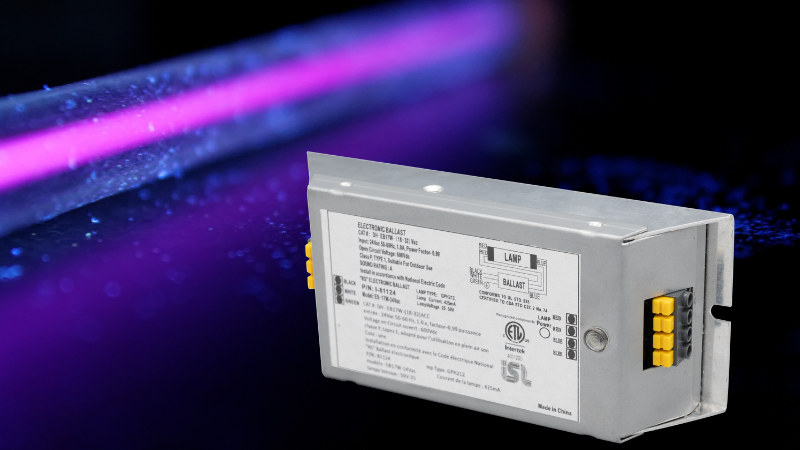Ballasts for UV-C Lamps: The Basics
As UV-C technology increases in popularity, the demand for UV-C specific ballasts have skyrocketed. Learn more about this vital piece of technology!
Introduction to Electronic Ballasts
An electronic ballast is an electronic device that is used to regulate the current and voltage in an electrical circuit. Electronic ballasts are used in electrical assemblies containing gas discharge lamps (ie. Mercury, Amalgam, Fluorescent, etc). Older designs were magnetic, operating via magnetic induction. Most ballasts made today are electronic, making them more compact. They also produce very low noise, which greatly reduces pulsing from the lamp resulting in the longest lamp life possible.

How Ballasts Function with UV-C Lamps
Mercury and Amalgam based UV-C lamps need a high voltage applied between the electrodes to spark the lamp. The uvc light ballast ramps up the input voltage and has an output voltage high enough to spark the lamp. A ballast is needed due to the construction of the lamps, they have negative resistance between the two electrodes. Additionally, a large voltage difference between the electrodes is needed to spark the lamp. The ballast converts the input voltage to the 400 ~ 1,000 volts required to spark the lamp. Once the lamp is sparked and arc is achieved, the ballast limits the voltage to a lower working voltage to keep the lamp illuminated, whilst regulating the power draw of the lamp.
Without the ballast, the current through the lamp would increase rapidly until it blew out because of the high voltage and negative resistance. The voltage drop once the lamp sparks is around 300V. This voltage can range up to a couple of thousand volts, depending on the assembly, making the operation voltage of the lamps quite low. In general, the overall current draw of a ballast/bulb system is relatively low.
Within the germicidal ballast there is a combination of resistors, capacitors, inductors, and other printed circuit board level components that dictate the overall output characteristics of the ballast. The ballast converts a sinusoidal AC input, of around 50-60 Hz, and modulates it to a 20-80 kHz square or sine wave pulse output. This eliminates the flicker that was originally associated with gas filled lamps.
UV-C Applications
UV-C purification has continued to gain popularity over the last few years. UV-C germicidal technology has been proven to be very effective in the HVAC industry for air purification. In the more commercial settings with higher foot traffic, surface disinfection is also a very important focus. New products utilizing germicidal ballasts are being developed every day.
UV-C light is also used in ozone generation, which is used for air and water purification. When ozone is produced by a UV-C lamp, the ozone and the light work in tandem to destroy harmful pathogens.
Another area where you will find UV light ballasts being used is in industrial pipe leak detection devices. Ballasts can also be used in various UV printing and curing applications.
As a result of COVID-19 and other harmful viruses, UV-C technology has become a necessity in a variety of industrial, residential, commercial and healthcare environments. This has only increased the demand and sales for UV-C sanitation systems.
As UV-C purification systems are implemented in more and more industries the demand for UV-C specific ballast continues to increase. If you would like to learn more about ballasts check out our article “UV-C Ballast Start Types” to see how you can maximize performance and ballast life in your applications.

